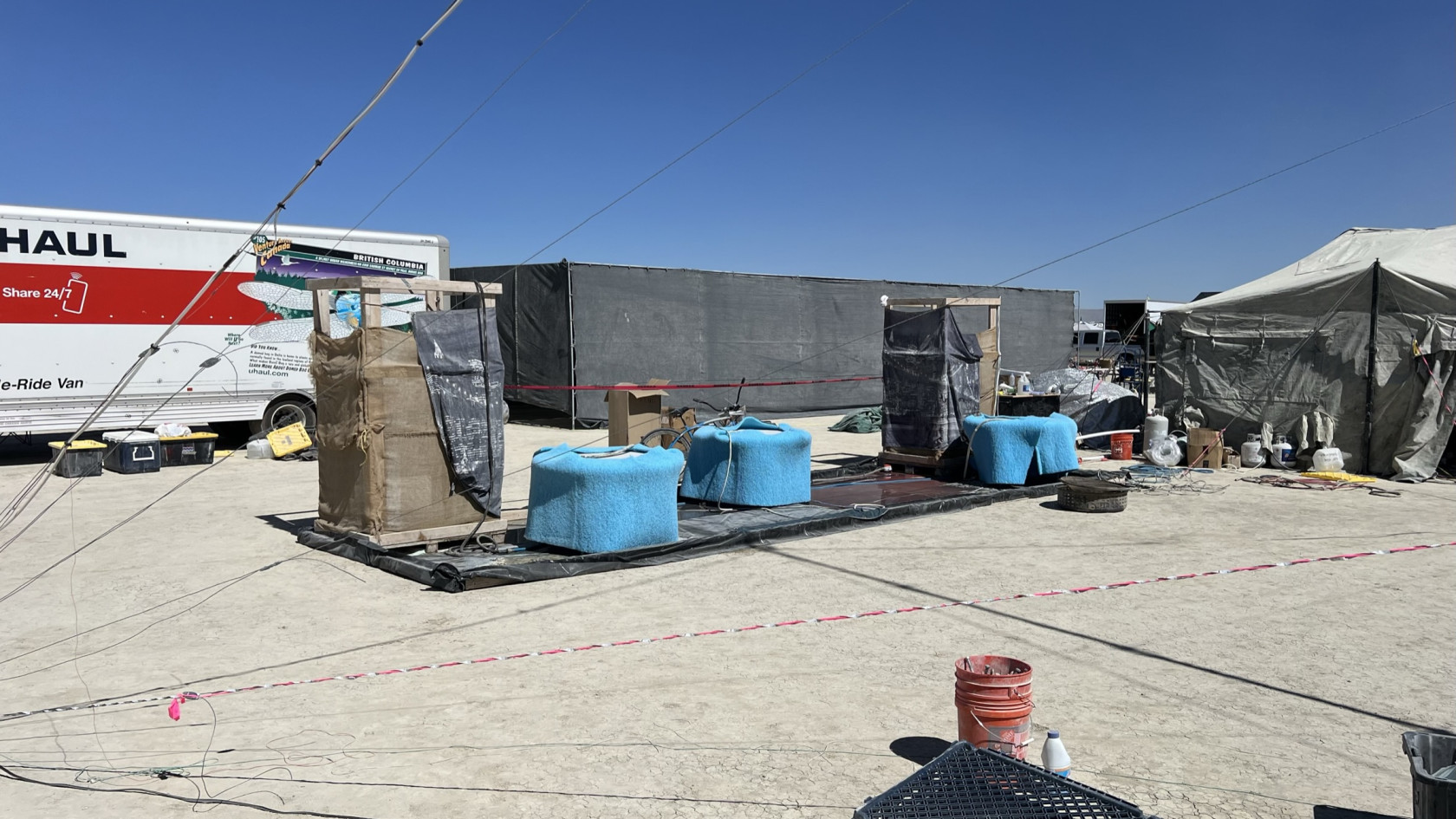Water / Showers / Kitchen
BMOrg Resources
https://burningman.org/event/preparation/playa-living/water/
Showers
The camp has two wooden showers which worked quite well in previous years. Campers are asked to use biodegradable soaps only, and are also asked to follow a specific shower protocol.
Kitchen
The camp has two sinks, one for washing dishes and one for dispensing water into water jugs (for drinking). Dishes are washed using two sets of spray bottles: One with a vinegar solution, and one with clean water.
How we handle water in general
You can survive burning man without power, but you definitely can't survive without water. The welcome staff will reject you at the entrance if you do not have an adequate amount of water with you (which the org sets at 1.5 gallons per day). We bring a bunch of 5 gallon jugs of water with us in our camp van when we enter BRC, but that's just backup (self reliance baby!). What we actually do is purchase water from a water vendor. They show up and drop a large 500 gallon water tank at our camp at the beginning of the event, and fill it with drinkable water. We then drop a pump into the container which pumps water to our kitchen, an outside sink for general refill of water bottles, and to our showers.
For 75 campers for 7 days, we need this much water:
75 people x 1.5 gallons x 7 days = ~787 gallons of water
A 500 gallon tank will last:
500 gallon / (75 people x 1.5 gal/day) = ~4.5 days
This means we would need to refill our 500 gallon tank on the 4th day of the event.
Our water vendor
https://mecoreno.com/reservations/
Gray water disposal
What we did in 2023
Drinking water: Our camp had a water vendor drop a large water tank at the start of the event, which they also filled with potable water. We covered the black tank with a large piece of Aluminet to keep it cool. It worked well.
Gray water: Last year we built an evaporation pond using a large black tarp and some wood as the frame. We also placed 3 tables inside the pond, with pumps pumping gray water onto the tables and the idea was to accelerate the evaporation process. A rough estimate is that the pond helps evaporate roughly half of the gray water, however we did not have a gray water tank and due to the rains and mudpocalypse the entire thing ended up failing, with the remaining un-evaporated gray water mixing with the rain water and escaping the pond...
We we want to do in 2024
We are considering having permanent tanks for potable water and gray water. The camp does not produce black water and getting rid of gray water is significantly simpler, especially considering our gray water is biodegradable (vinegar and biodegradable soaps being the "worst" molecules in the water).
To ensure microbes and mold do not grow in our gray water tank, we could use any of the following options:
-
Vinegar: A natural disinfectant, vinegar can help prevent the growth of bacteria and mold in gray water tanks. It's biodegradable and safe for the environment.
-
Baking Soda: This is another natural product that can help maintain pH balance in the water, discouraging microbial growth. It's also harmless to the environment.
-
Hydrogen Peroxide: Used in a low concentration, hydrogen peroxide can serve as a mild sanitizer and disinfectant for the water without causing harm to the environment when released.
-
Citric Acid: A natural preservative and antibacterial, citric acid can be used to control bacteria and mold growth. It’s biodegradable and commonly used in septic treatments.
-
Eco-friendly Tank Treatments: There are commercially available tank treatments designed specifically for gray water systems that are biodegradable and non-toxic. These often contain a blend of natural enzymes and beneficial bacteria that break down organic matter and reduce odors without harming the environment.

